I've recently had the pleasure of speaking to the brilliant Aleksandra Jovanić. When she's not busy giving lectures, Aleksandra spends most of her time making generative art - in a variety of mediums. She's quickly risen to become one of the most prolific artists in the space over the past two years, participating in multiple digital and IRL exhibitions around the globe.
In our conversation we speak about her early beginnings, from the path that led her to becoming an associate professor at the university of arts in Belgrade, that had just spun up a new program in Digital Arts in the early 2000s - to later getting into making code based blockchain art on hicetnunc and fxhash. We also address the influence this formal career has had on the art that she makes today.
In the latter half we dive deeper into her practice, from the importance of a conceptual foundation for her works, to her fascination for making series and collections of things. It was deeply insightful to learn about how she approaches the generative practice in general - and how she tries to go beyond the boundaries of the screen to experiment with different physical materials.
Education and Early Years
GS: Looking at your CV, you have an impressive track record. You started with a Bachelor in Computer Science and later transitioned to the digital arts, I'm curious, how did that happen? Where does it all start from childhood and how did you end up getting into generative art?
Aleksandra Jovanić: As every child, I was curious about a lot of things; drawing, sculpting, making, and deconstructing how things are built. In school I was better at the subjects that didn’t involve a lot of repetition and memorising, like math for instance. Subjects where I could use logic and intelligence were generally more interesting. I wasn’t an all A student, but was almost there, and I continued in that style throughout all of my education.
Ultimately, some of the subjects that I was taking in high-school led me to studies in computer science - I guess due to the environment that I grew up in and the always present narrative about struggling artists, I ended up choosing a field that was a bit more future-proof. But even then, there were different faculties that you could choose from, for example the Faculty of Electrical Engineering had a computer science track, the Faculty of Mathematics, the Faculty of Organisational Studies, etc. Ultimately I chose the Faculty of Mathematics. And I’m still satisfied with all of my choices. I ended up finding a good path.
Coincidentally, when I graduated they had just established a new program in Interdisciplinary studies at the University of Arts here in Belgrade, and for the first time, they were opening their doors for anyone to apply. Usually, the further along you are with your studies, the narrower your choices become. You end up having a limited number of options for universities that you can go to if you graduate from a certain faculty. But at the time, the people in charge of the program realized that technology had started influencing the field, and they did something really advanced for their time.
That was the year 2000. Because this new program in Digital Art was a joint effort between different professors from different faculties and areas of study, it was possible for everyone that had portfolio to apply. Your degree didn't matter that much. During my studies at the faculty I had found interest in web design, researching and learning HTML, CSS and scripting languages - so I had already done different kinds of designs and animations - and it wasn't really a problem for me to put together a portfolio and sample some of my works for this purpose.
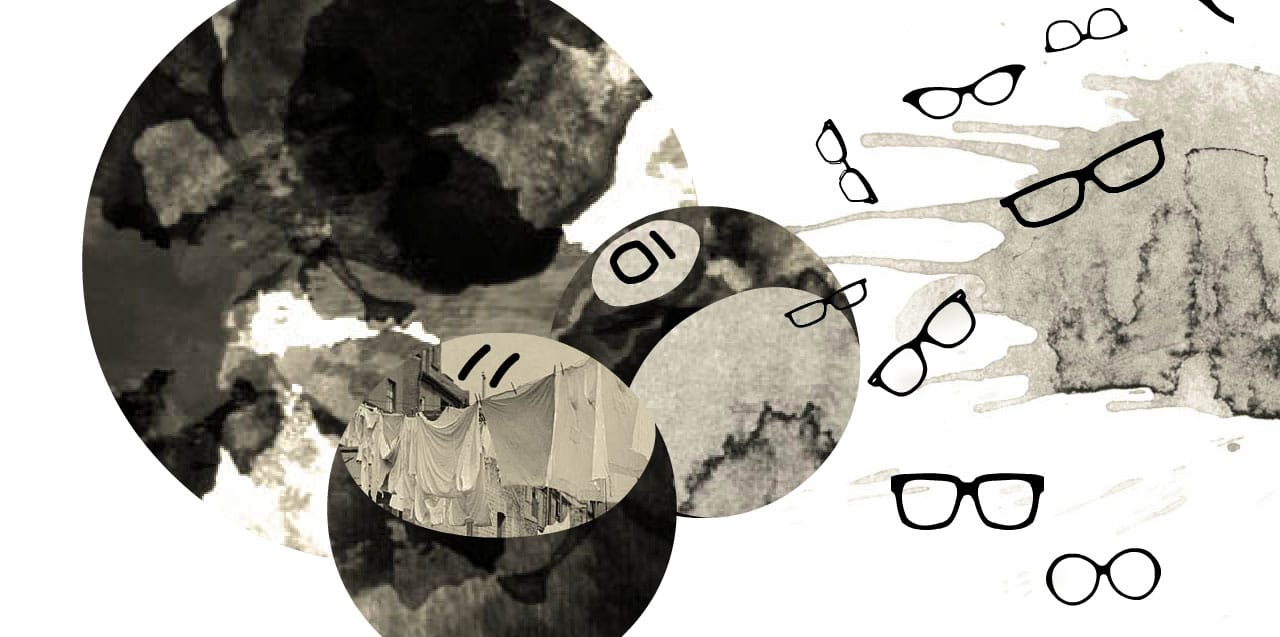
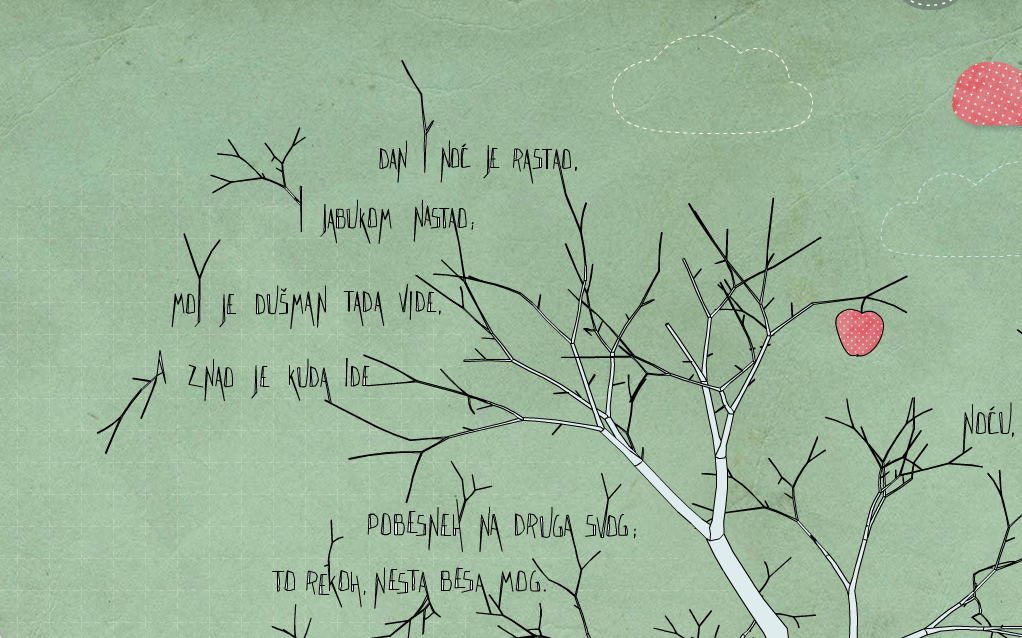
It was interesting for me - because for my colleagues that were already coming from art faculties, it was simply an upgrade to what they were already doing. But for me it was a completely new field, in which I was essentially starting from scratch again. This is basically how I switched to digital art after I had finished my degree in computer science, and later on led me to also pursue my doctoral studies in digital arts. And because I was so enthusiastic about all of it and did good work, I was offered to start working as a teaching assistant, which marked the start of my academic career.
Now I'm working at the Faculty of Fine Arts, teaching a set of subject that's called "Technology of New Media", which is in fact includes Creative Coding, Physical Computing, 3D modelling and 3D animation, Web Design, Makers Technologies. I also stayed as a professor at doctoral studies in Digital Art, and I teach a subject there called Interactive media.
Influence of a Formal Education on making Art
GS: My entire educational background lies in computer science, I'm curious about the things that you learn in an art-centered field. What are some of the things they teach you during your Master and PhD studies in Digital Arts? Or is it more research oriented?
AJ: Because it was a new program when I started my post-grad studies, we basically had 5 main subjects: digital animation, digital video, digital imaging, digital sound and interactive media - tadaa [laughs] - so it's basically all the fields in traditional media with a technological aspect introduced. Then there's accompanying subjects, like theory of art, writing methodology, as well as other things that add value to the core subjects. This program is similar to what is now taught as a PHD program.
During my masters I mostly focused on digital animation. The final project that I did in 2005 was an installation that consisted of a series of animations, titled Digital Dreams. The installation tries to imagine a future in which our machines have become more intelligent and be able to dream - and if they could dream, what would they dream of? The animations represent those dreams, displayed on computer monitors, and they were essentially collages of materials, that I imagined the computer owners would expose their computers to.
During my doctoral studies, I dove more into interactivity and mostly used Flash. I played with the notion of using game mechanics, as well as algorithms that were commonly used in games, to create an environment in which players could explore short stories and poems - so you had to solve puzzles and play the game to unlock new chunks of the story. This was already generative in a way because the puzzles you had to solve were always different.
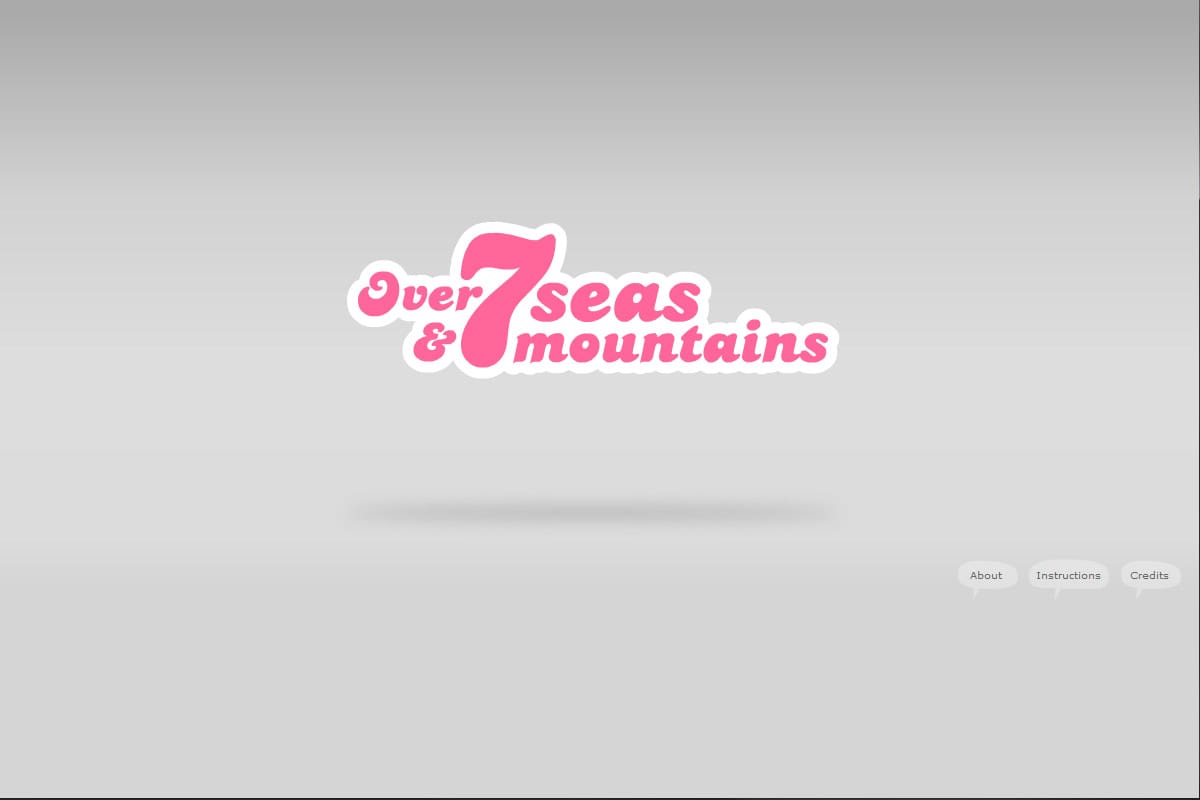
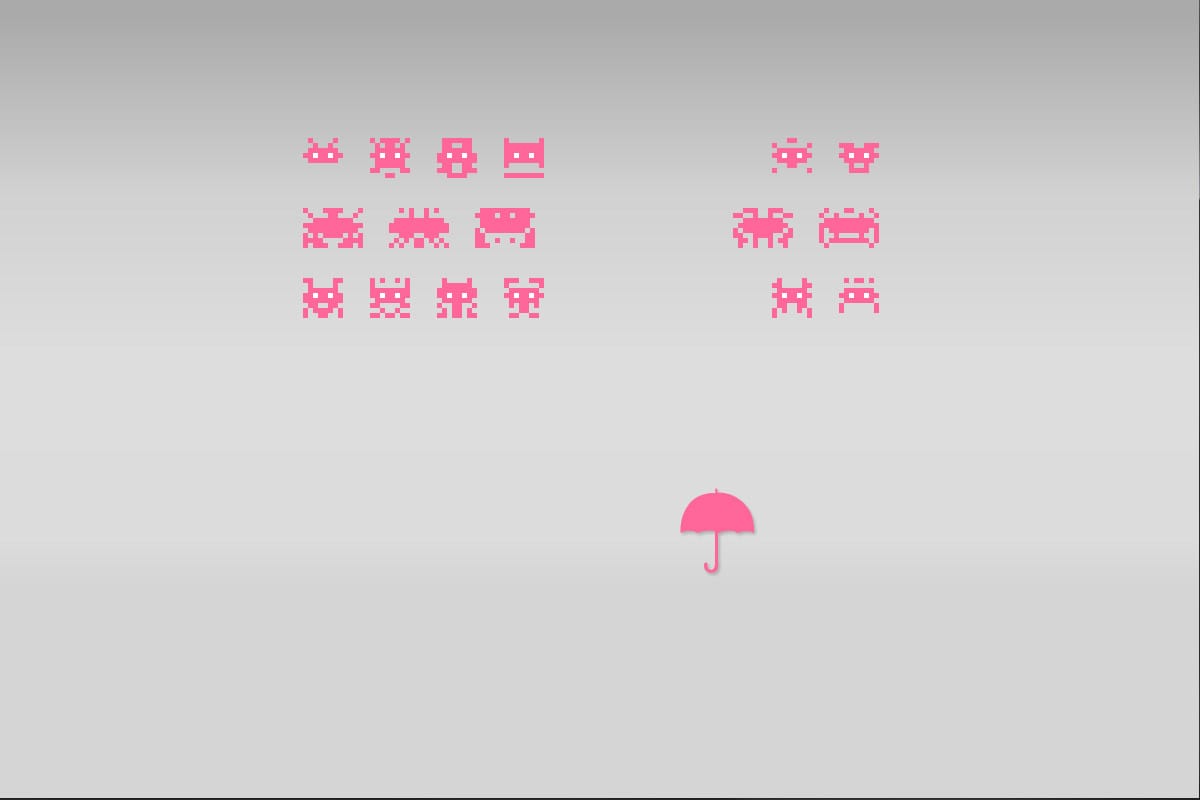
When I got my doctoral degree I was invited to teach these studies, and that's when I started teaching with Processing. That was around 2011 I think. Later on I started using P5 because I wanted to share my work in an interactive manner online.
GS: Do you think you had an advantage over your colleagues coming from a background in computer science?
AJ: I think I did, yes. Sometimes you're not aware of the advantages that you have over others, and you take for granted the things that you know. Before my Masters I worked for half a year at an agency doing web design, and I had colleagues that did not have a formal education in mathematics or computer science, so there were some things that were easy for me that they struggled with. Like boolean algebra or regular expressions for example; that's when I became aware, for the first time, that the things they tortured us with in the faculty can actually pay off. [laughs]
GS: A lot of the things they tortured me with during my time at uni, like data structures and different kinds of algorithms, ended up being quite useful for making funny images with code [laughs] But at the time you don't know that.
AJ: Exactly. [laughs]
GS: When I made a poll over on Twitter asking how people got into creative coding, I was surprised to learn that a lot of people were actually self-taught. Back in Lebanon, pursuing academia is the more common career path. If you told me today that I had to re-learn programming from scratch again, I don't know if I would be able to, by myself at least. In uni you have to because you eventually want to pass your courses.
Long story short, to what extent do you think your academic background influences the art that you make today? Do you think you would make a different kind of art, or have a different approach if you were self taught? A bit of an open-ended question.
AJ: That's an old question. I think we can reposition this questions as "What art would you make if you didn't know what art was?" basically if you hadn't seen or read anything from the history of art - in the context of generative art, that's similar to asking "How does knowing different algorithms influence the art that you make?"
Maybe your course was similar to mine, in our exams they would ask us to write the code for a specific problem, and ask us to do so in the most optimal manner. And I was always frustrated with that; if it works, why does it matter how long it takes [laughs] and today I still don't really mind waiting for my code to produce its outputs - okay I have to admit it matters when I need a good frame rate for the smooth animation.
While for art purposes the technical knowledge doesn't matter, it can influence the way that we write the code and sometimes lead us to surprising results that can lead to different outcomes. So for me its important to have a strong initial concept, - if you start with a strong concept it doesn't need to be as algorithmically complex.
GS: Being more knowledgeable about techniques and methods allows you to express yourself more freely. But at the same time it makes me wonder - if you didn't know a particular solution for a given task, would it lead you to be more creative, to discover your own solutions, and even lead you down the path to a completely different kind of art?
AJ: Exactly, I like to compare this to machine learning models of the future. If you already know the solution for something that you want to create, you're not very different from a computer executing instructions; you're not forced to be creative and think outside of the box. In the future we're expecting General AI to have ideas of their own. Essentially, our creativity emerges from balancing between learned concepts and adding something new. There are so many philosophical aspects to your one question.
Maybe early cave paintings are an example of this, where art was made without any prior notion of what art actually was. Everything that came after, somehow builds on top of what came before. Even in technology we are strongly influenced by previous inventions.
GS: Maybe a bit of an unpopular opinion, but I think that cave paintings are overrated - I think they were just bored in their cave.
AJ: Exactly, we also put a lot of meaning into those paintings. The meaning is more important than the actual paintings.
Conceptualism in Genart
GS: Now that you mention meaning in Art - I'm a big fan of your Chromatlas series, that explores the concept of Apophenia, essentially letting the viewers attribute their own meaning to the artworks.
In art we frequently emphasize what the art is aiming to represent, and what message it tries to convey - in my own work, the message is often not in the foreground, the work generally comes from a joy of making, and an internal urge to do so. What is it like for you? Do you specifically try to put meaning into your works? Or is it more of an explorative approach?
AJ: I think that my stronger pieces are those that have an underlying concept, and I generally value them more. Although I do have pieces that emerge from exploration and process.
A recent example for this, was a solo exhibition back in December (2023) where I chose one of Sol Lewitt's etchings as a starting point, not the artwork itself but the “instructions” that he used to make the piece, words that describe what is the piece or how to make it. This particular one revolved around drawing different types of lines, straight, wavy, and broken ones. It was really interesting and inspiring to me to try more variations inside of these instructions:
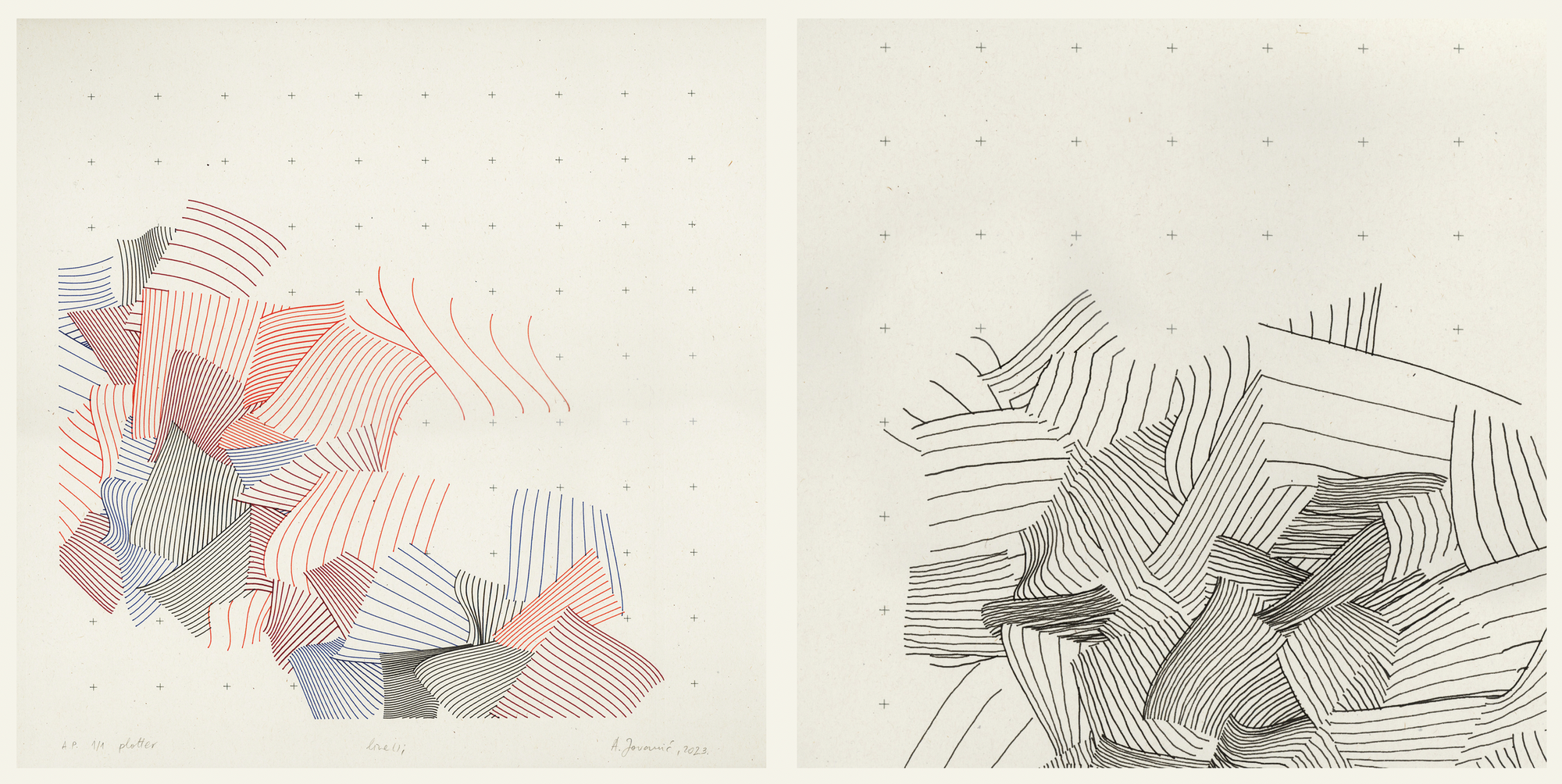
For this exhibition I explored what I can make strictly inside of those limits, but during the process I often thought to myself "what if"… saving the interesting ideas for the next project.
Without conceptual constraints, I’m free to add something new to the algorithm every day. This is more of an experiment however, where I try to explore the visual side of a simple algorithm. Maybe this example is not so illustrative, and they're (the two approaches) overlapping a bit, but I'm aware that when I'm working on something if it's an exploration or a more complete piece backed by a concept.
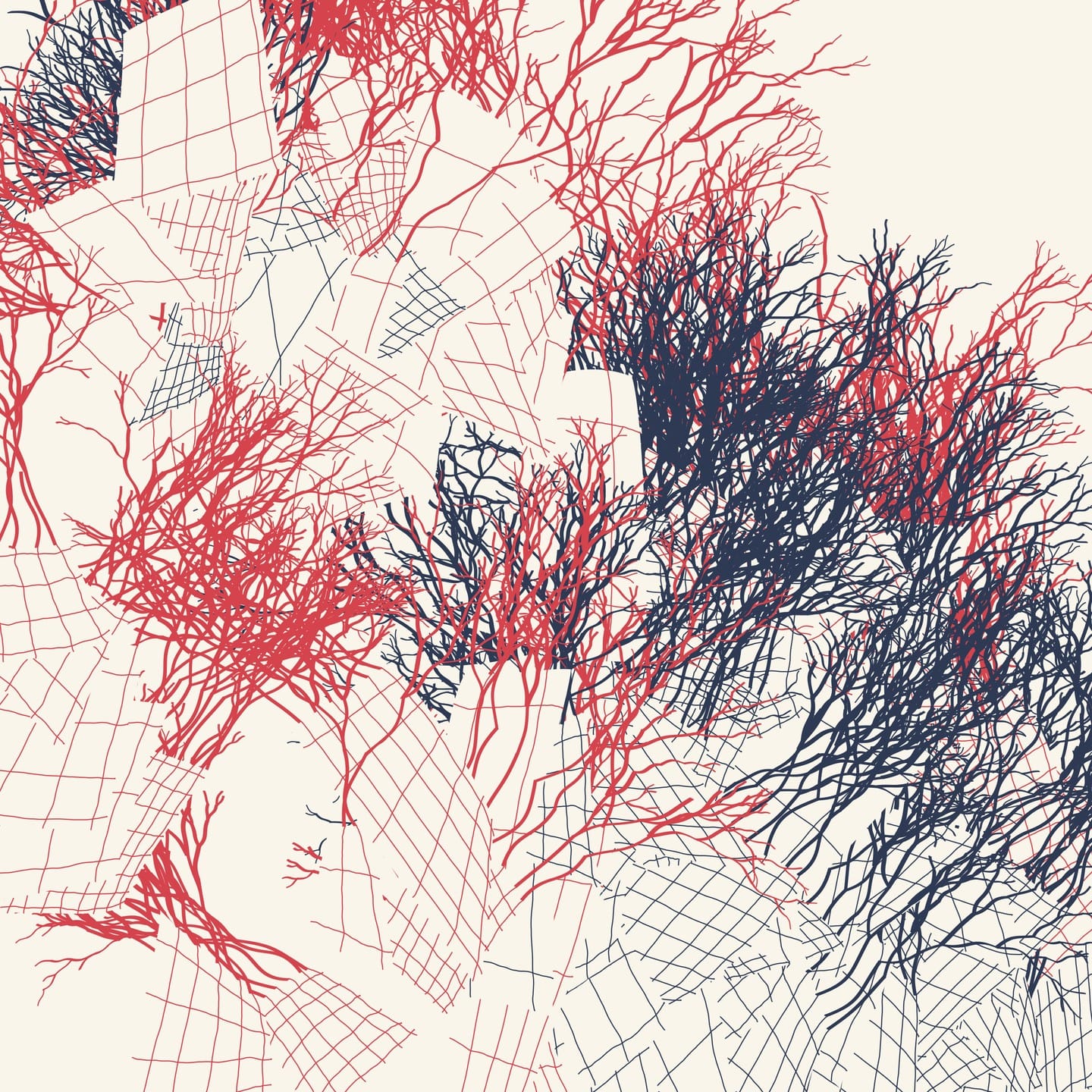
GS: Would you say it is a sort of visual research similarly to Vera Molnar's?
AJ: Exactly. It's quite lucrative to work with algorithms, maybe economical - every reload you get a different result. This fast pace of rendering outputs allows for more time to explore the possibilities of adding and removing elements, as well as the flipsides.
GS: I'm really fascinated by your ability to create series of artworks that are stylistically and conceptually coherent, and that's often what you do, with Chromatlas as a prime example. Speaking to the other artists that I've interviewed in the past, including myself, there's always a desire to do something like that, to make a series of artworks. But it never works out somehow, separating ideas into individual standalone pieces that are still somehow coherent.
How do you do it? Is it a single idea, that you make variations of? Or is it an idea that evolves over time?
AJ: For Chromatlas it was an evolving idea. When I started I didn't know that it would be a series of 10 volumes. But the concept was there, and I knew that there were more visual ideas within this concept that I could explore. The question here is, how do you decide that your piece is finished?
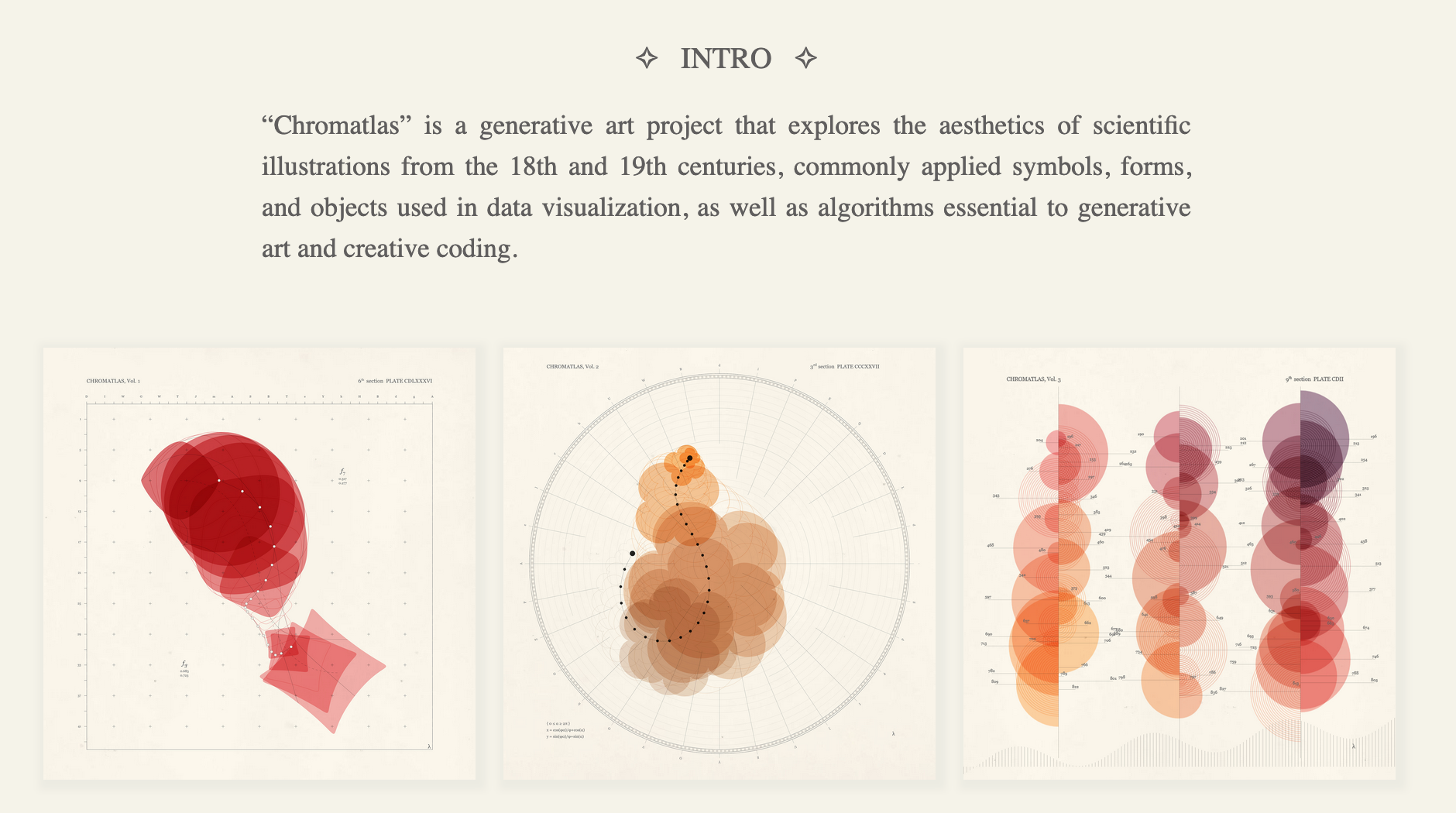
I developed the project over the course of a whole year, with some pauses in between. While working on one volume I would see aspects that could be turned into projects of their own. Approaching the last two pieces, I realized that I had explored all the ideas that I liked, from the visual language of data science, and also from vintage color classification books. This is also how the name of the series came to be. So basically, it felt I had exhausted all the ideas, and in part I was also getting fatigued of it. Reflecting on the project now, I know it could have also easily been released just as a single generator that randomly produced a variation from all of the volumes. But I also like the way that I concluded the series, I don't think I overdid it.
People were complaining that the series concluded with ten pieces, instead of a number that's divisible by 3, either 9 or 12, to allow for a neat arrangement in a grid [laughs]. But then you have Herbarium and Balancium - the two pieces that I made for Art Basel which I made in the middle of the Chromatlas series, and are aesthetically similar - so you can consider them bonus pieces to conclude the grid.
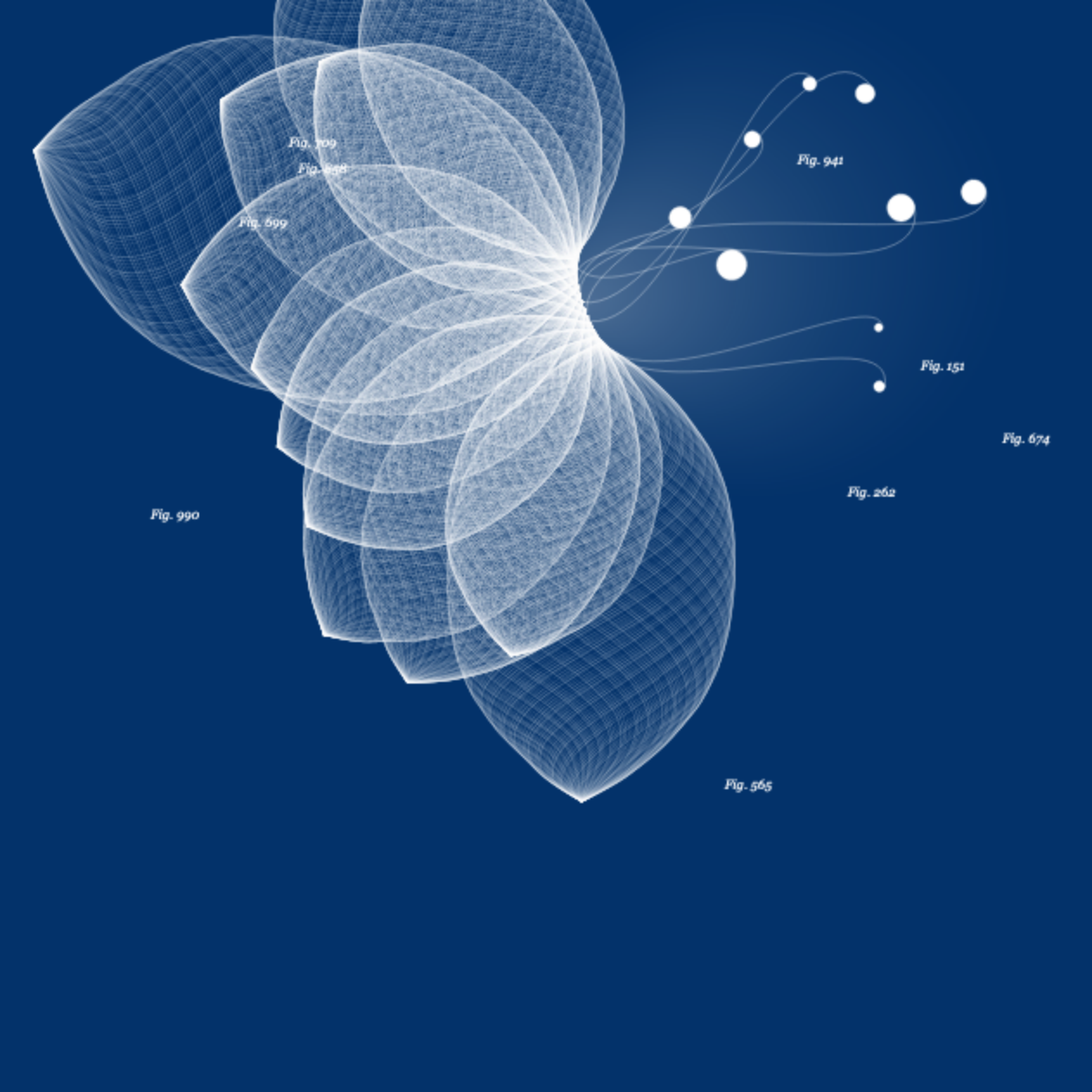
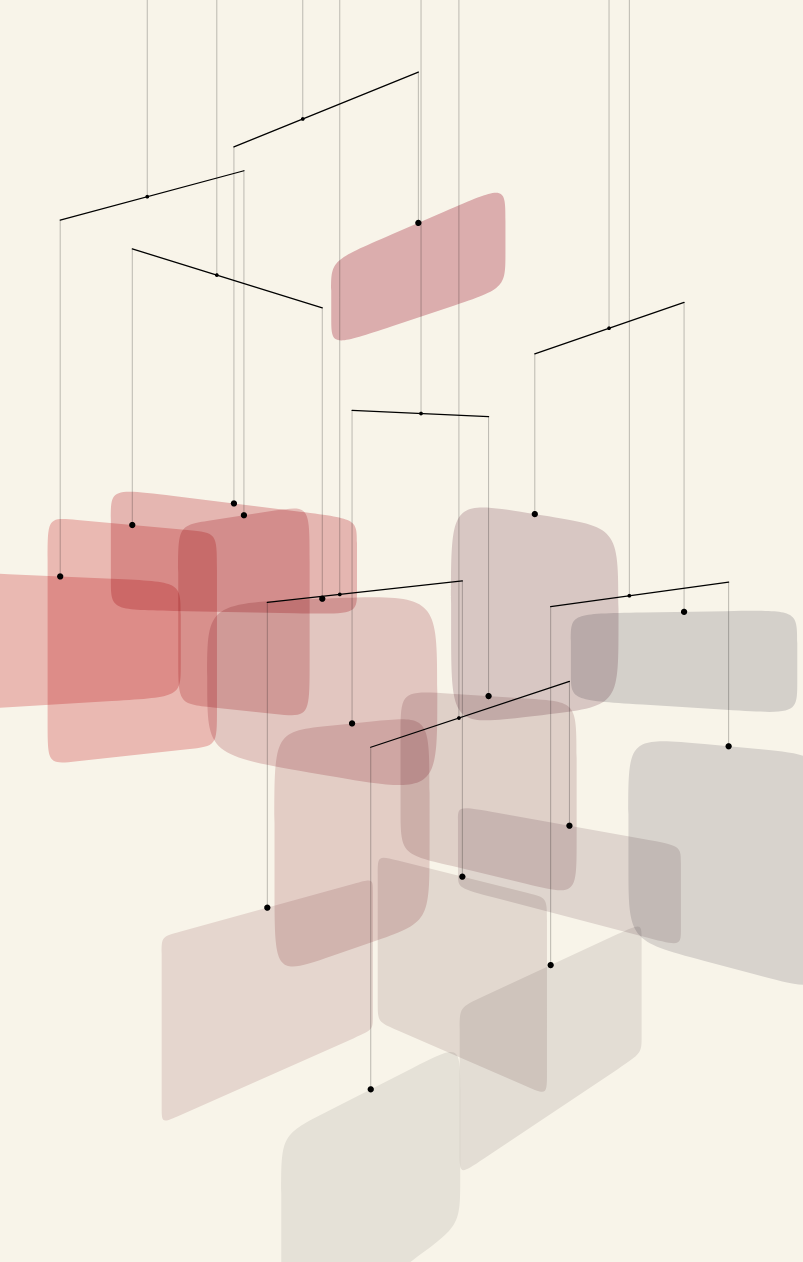
Herbarium #987 and Balancium #1052 in my personal collection.
Later I also exhibited the series, where I made a big book that would show 2 cherry-picked iterations of each project with an accompanying scientific-style poster:
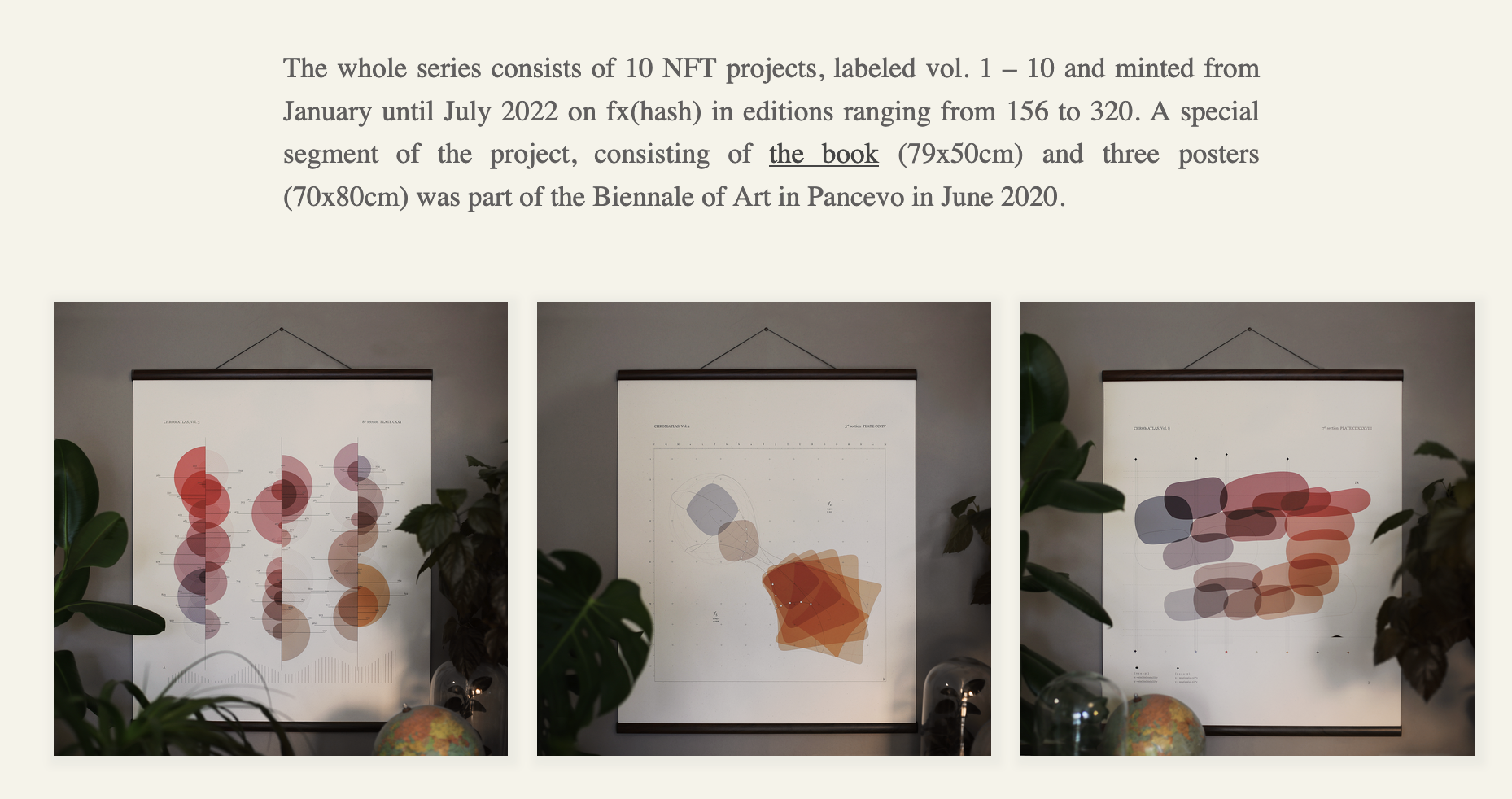
Serialization of Ideas
GS: Sometimes I have an idea that could potentially become a series, then I become too invested in one of them, improving it and it turns to be better than the other ideas - and you can't release a series where one is better than the others, you want them to be somewhat on the same level. So it's the balancing aspect that I struggle with.
AJ: You say that your pieces are different from each other, but I do recognize your work whenever I see it, therefore you do have a style.
I think what makes me inclined towards series is my tendency to collect things. I was always fascinated with apothecary drawers - you know, big apothecary closets with multiple drawers each of which contains different things. I'm not so much of a collector in real life, I don't own much physical art, but digitally I do it a lot, putting things into series and collections, so in that way it's in my nature to make or create in series.
GS: Is this idea of collecting, and making collections, related to you posting consistently on social media?
AJ: Probably [chuckles]
GS: You have an impressive following on Instagram!
AJ: I've been posting on Instagram for a long time, but it wasn't until I started posting Chromatlas WIPs that my following exploded - I can't really explain it, but it must be that the algorithm likes those colors [laughs] my following has been pretty much stable after I concluded Chromatlas.
When it comes to posting on social media it's more of a daily exercise, maybe a bit similar to the other artists that do daily sketches. I can't commit to a strict daily coding practice like that, I need to rest from time to time, but posting regularly on social media gives me a sense that I'm working on something. Now it's almost like an automated task, for example this morning I did my daily, posted it on my socials - done! Sort of like a conclusion for the daily exercise/workout, and then I can move on to other things, otherwise I'd just obsess over it and keep working on it for the whole day. I often get more ideas right after I've published a post/tweet, and that's usually what I’ll explore the day after.
The good thing that comes out of these daily experiments, eventually they fit nicely with an algorithm and concept that I have, so they can serve as a building block for something new. If I'm working on a piece for an exhibition, if I have a deadline, then my dailies suffer.
GS: I can relate to that, when you post to social media it feels like a conclusion to the coding session.
On Composition and Color
GS: On that note, when you're doing your explorations and developing these ideas, do you focus more on the structure or the aesthetics of the piece? Or is it more of an interplay between the two?
AJ: I don't know the right answer. I haven't thought about it.
Maybe the composition is the first part of it for me, because it shows me the whole piece and if it works, followed by the details. So at the beginning it's a simpler version of the final output, without so many fine details. I have no idea though, maybe we could analyze some of my projects where we compare the first draft with the final outputs and make a conclusion.
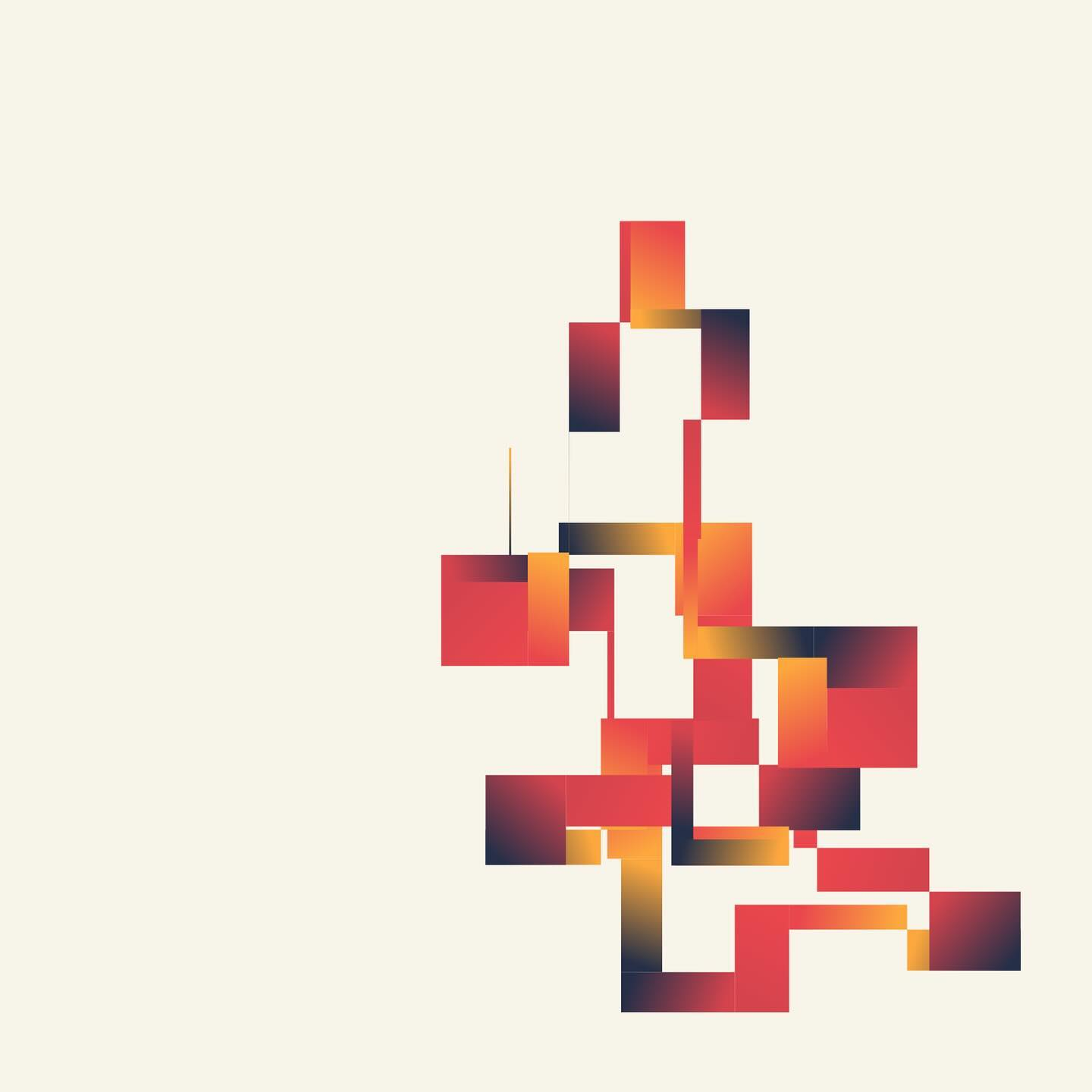
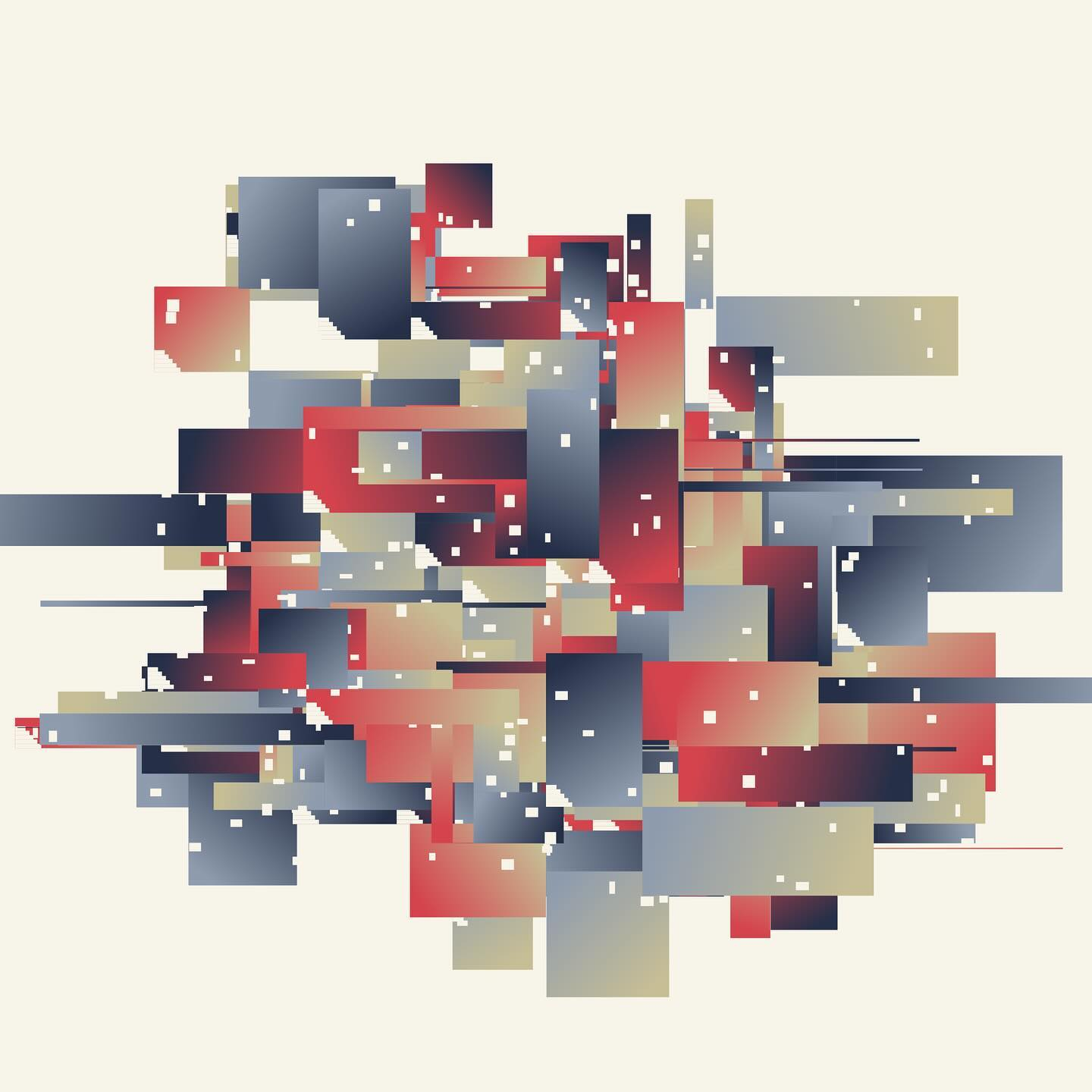
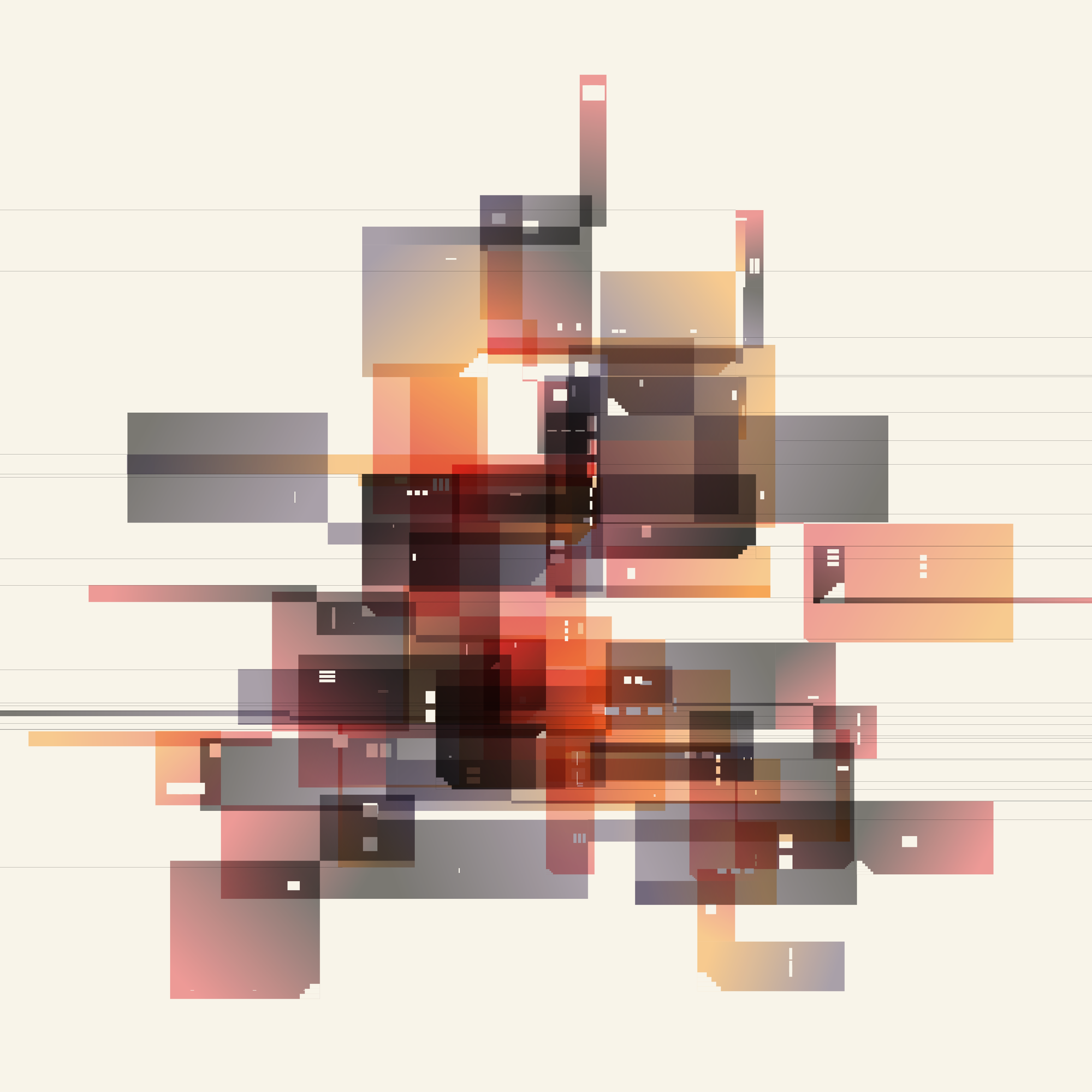
GS: For me I like to think of structure and texture separately. I often struggle with the texture part, I don't know why it is so hard for me; when it comes to making interesting geometric things that comes more easily. Maybe it's because get so tired of seeing the same colors while working on a piece - do you experience that as well?
AJ: Yes and no, I usually limit myself to a simple palette with 2 or 3 colors and do everything with them.
In Chromatlas I also used a limited palette of eight colors - two of them being similar shades of red, so seven colors really. I don't remember spending too much time choosing them actually. In Chromatlas I also started introducing gradients, choosing values in between 4 chosen colors, and letting these gradients overlap and multiply each other resulting in beautiful effects. It's such a simple trick, that's worked for me for more than a year now, so even though I'm always using similar colors, I'm getting results that look recognizable and fresh enough.
But now I've gone back to choosing only two main colors, in addition to a background color. But like you said, that makes things harder again, because you can get bored of the palette more easily again. On the other hand if I add too many colors too quickly, it gets too colorful and I also get sick of it fast. So you have to find your own way to go about it.
GS: That's something I feel that I need to really sit down and properly practice at some point. But you're giving me good ideas to explore.
Getting into NFTs
GS: One other topic I wanted to touch on was how you got into NFTs - that was around the same time that you joined Raph for hosting an episode of creative code news. How did you discover hicetnunc and what was it like in those days?
AJ: Maybe half a year before I got started with NFTS, I had consciously decided to post more of my generative art explorations. It was a solitary endeavour, just doing something for myself. Those pieces were experiments, they weren't really connected to any kind of concept, so you can't really go to an exhibition space or gallery to exhibit them or be part of a group show.
The generative art community was very welcoming, receiving all the likes was really emotional for me. I started following more people that were doing generative art, you, Raphaël, and all the other celebrities. I remember people commenting "when will you mint this?" and "will this be an NFT?" - at that time I didn't know what to answer so I played dead.
At the same time I became intrigued by Raphaël's WCCChallenge (Weekly Creative Coding Challenge), and I remember being so nervous about submitting something for the challenge, fearing what he'd say. The community around his discord and challenge was really inspiring though. And Raphaël was actually one of the people that helped me get started at the time.
I remember asking some of my friends prior to that, to help me, read some articles and figure out where to start - "set up a wallet" - okay but how? - "How do I transfer..." - "Where can I buy Tez" - so I had a lot of questions without any easy answers.
So basically, Raphaël helped with a few pointers telling me "if you don't succeed with this I will help". But, also mentoring me on how to price pieces appropriately, something that no one was writing about then. "Price one at this price, two at this price, three at this price, etc..." and I was like "I don't understand why or how…". But by minting my first piece 12 hours later it all started to make sense.
Looking back 3 years later, you can't actually recall all the problems and all the questions that you had when you started. So you have to actually go through it on your own and try things to figure them out. It's just like programming, you can't just watch a programming tutorial and then magically get that knowledge.
GS: I wish you could [laughs] I remember that I also discovered Raph through Twitter, then joined the discord and started participating in the challenge. Lately I really haven't had the time to join, but I've had some really cool ideas through the challenge, when you have to follow a prompt you end up with something that you wouldn't have otherwise made. Same with Genuary.
Later on what was it like for you creating your first long-form generative project on fxhash? Was it challenging?
AJ: My first mint on HeN was code, and I tried to maintain that practice to mint exclusively code ever since. I have one collab with Raphaël, that is still a code based piece, but was minted as a capture of the outputs from our combined code:
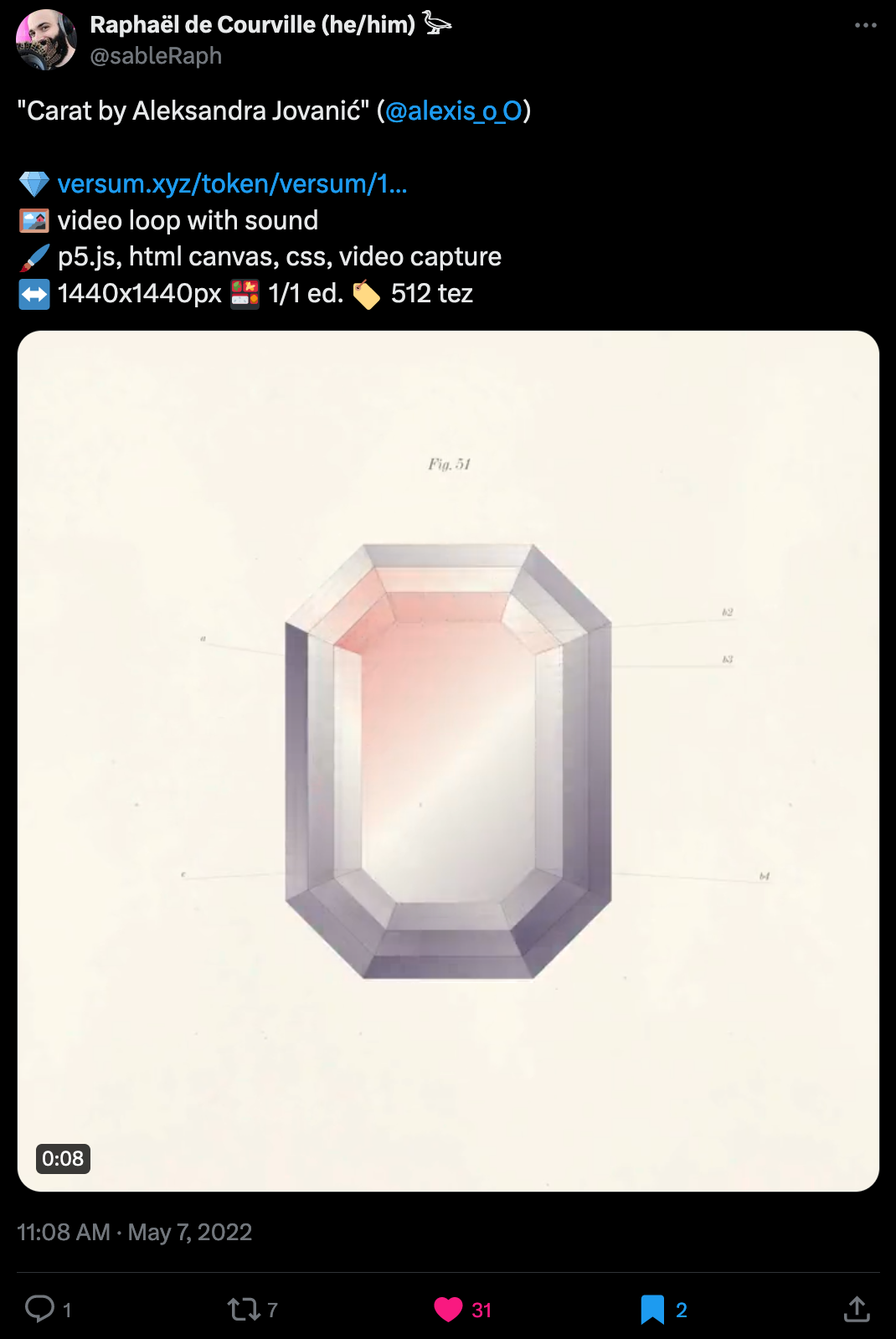
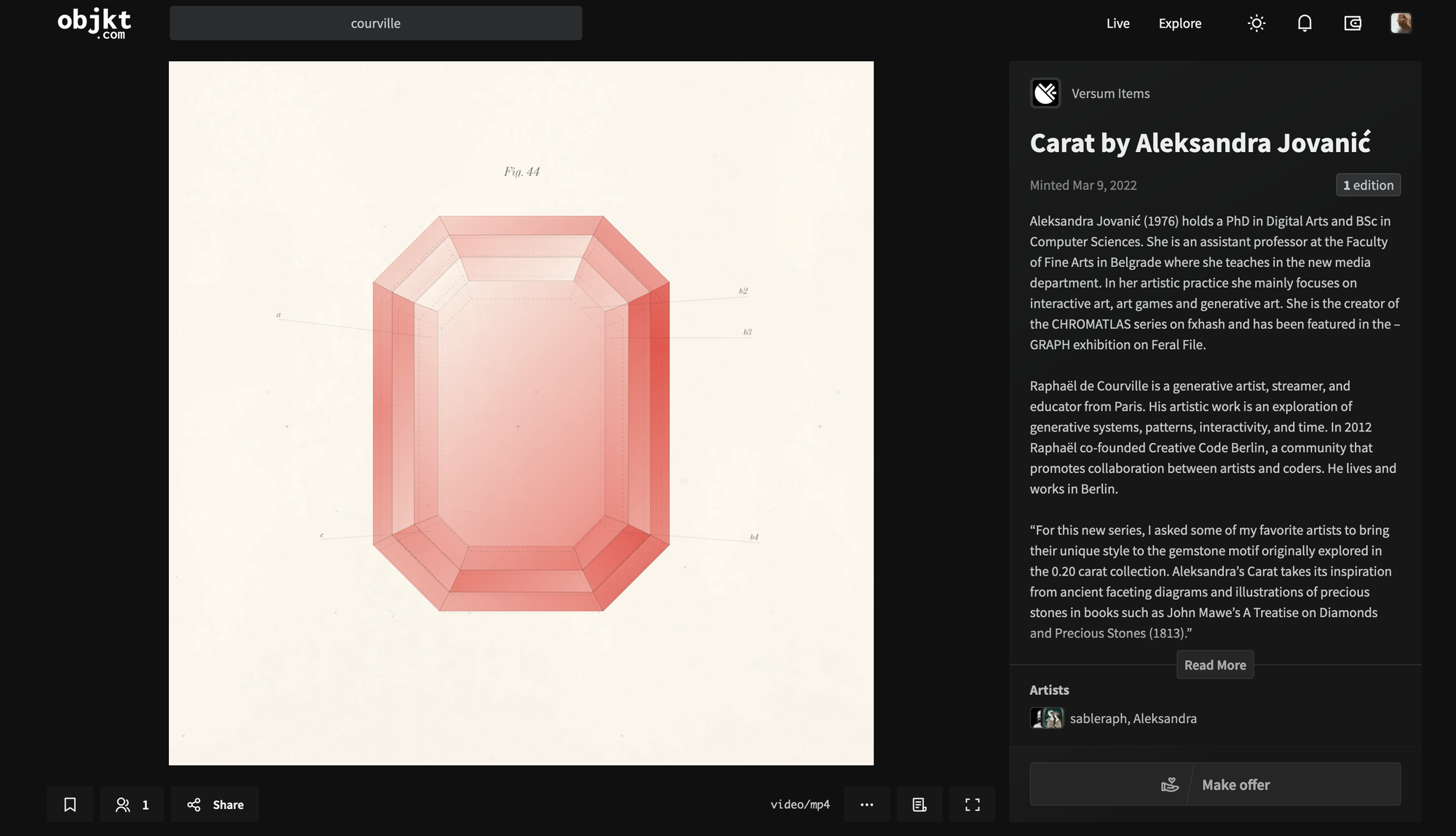
Link to Tweet | Originally minted on Versum, that no longer exists today, the project can be found over on Objkt.com. It is still mintable as of today.
I can’t recall any other piece that I've minted that isn’t code. So even if the pieces are minted as editions, when you view them they always look different, generating a different variation. Therefore, it wasn't really difficult for me to transfer those ideas to fxhash. And also lomz, one of my IRL friends was one of the first people that minted on fxhash and encouraged me: "Oh it's so fun, you should try it!".
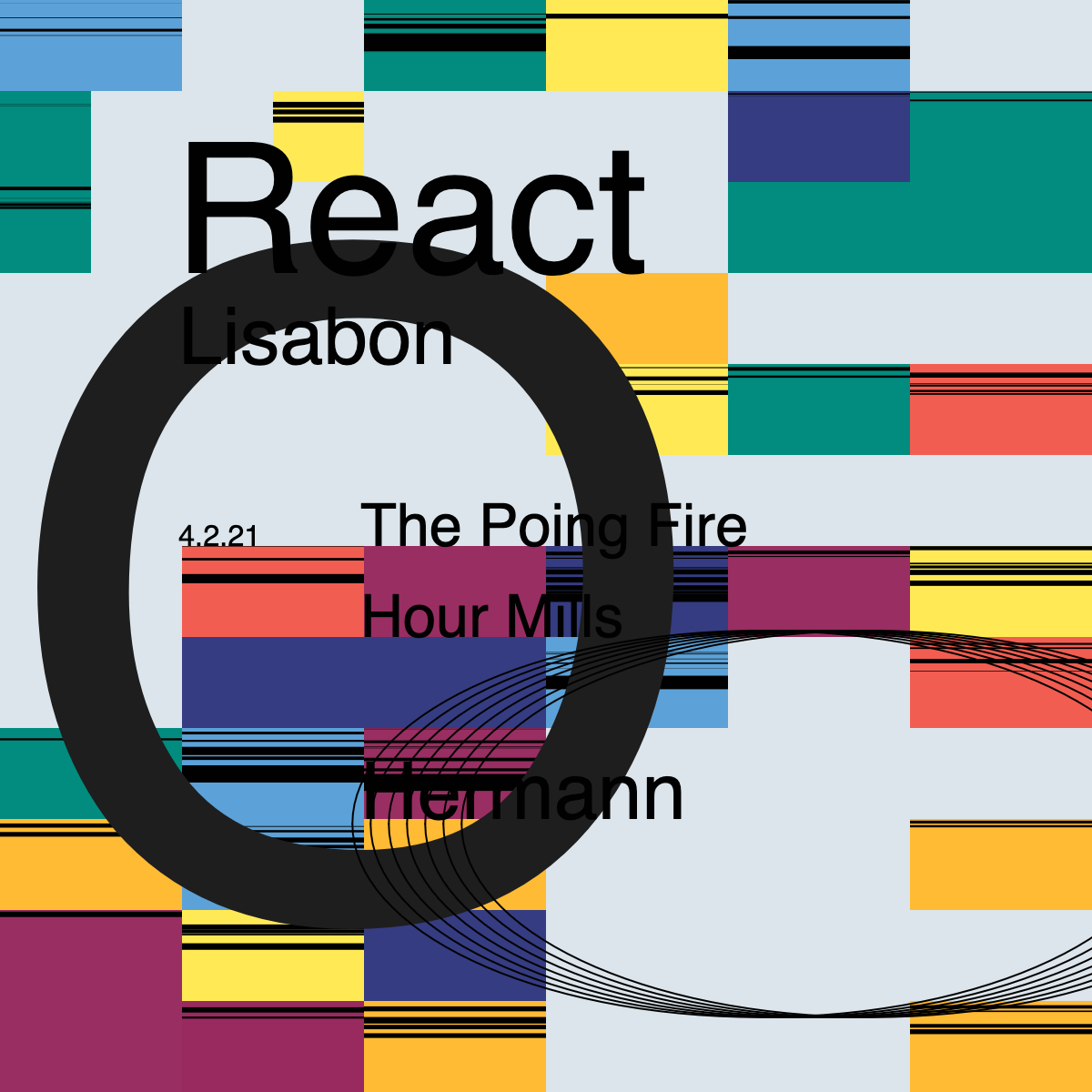
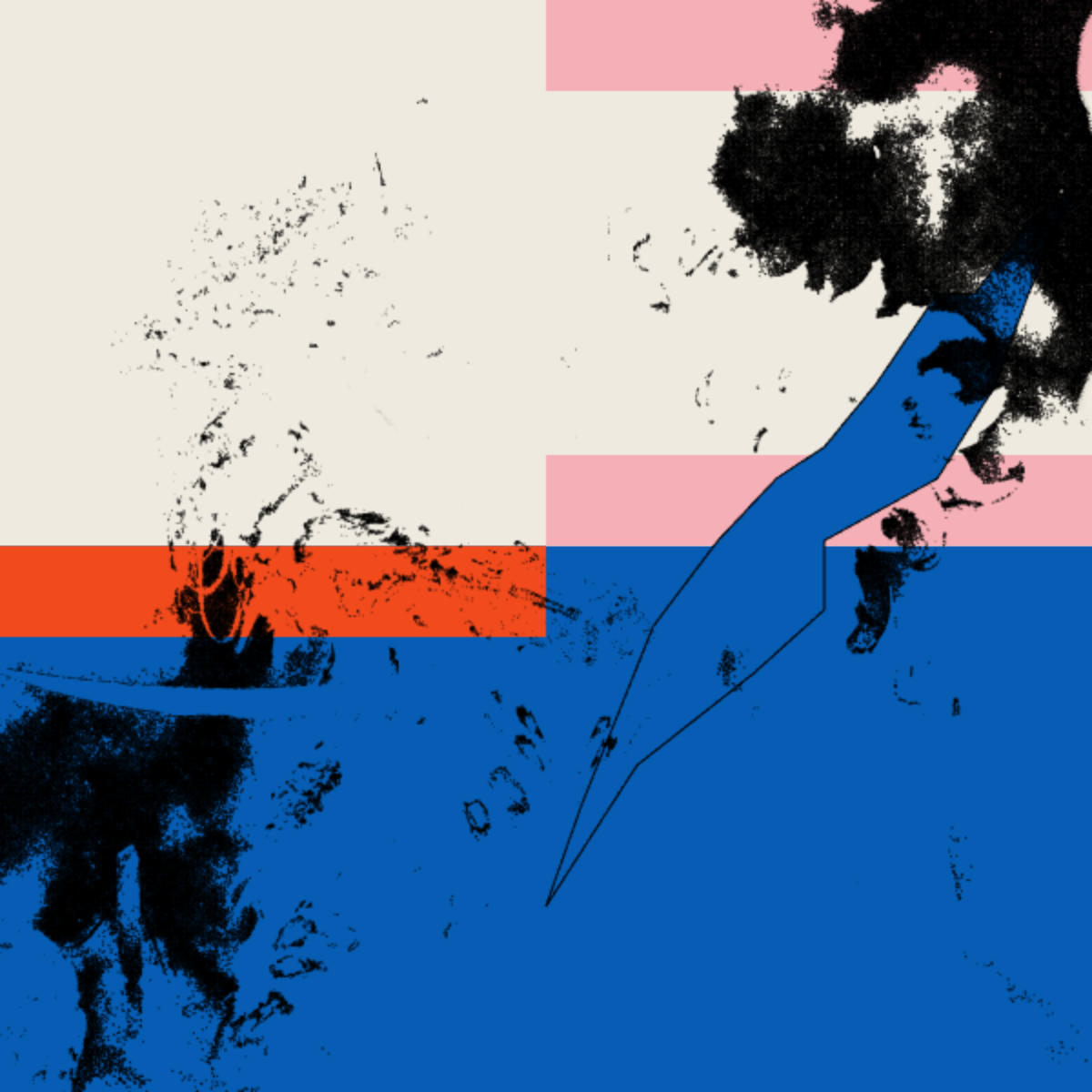
Generative Art - Poster and Generative Graphics - Parts by lomz released on fxhash on November 11 and November 17 respectively
Then, during one of Raphaël's creative code meetups, that usually happens once a month in person in Berlin, but held online due to the pandemic, Raph invited me one day to do something together, and basically we tried to see how the fxhash generator produces the random hashes. A few days later I combined that knowledge with something that I had already been working on, and released my first series. It was a 3 part series [laughs]!
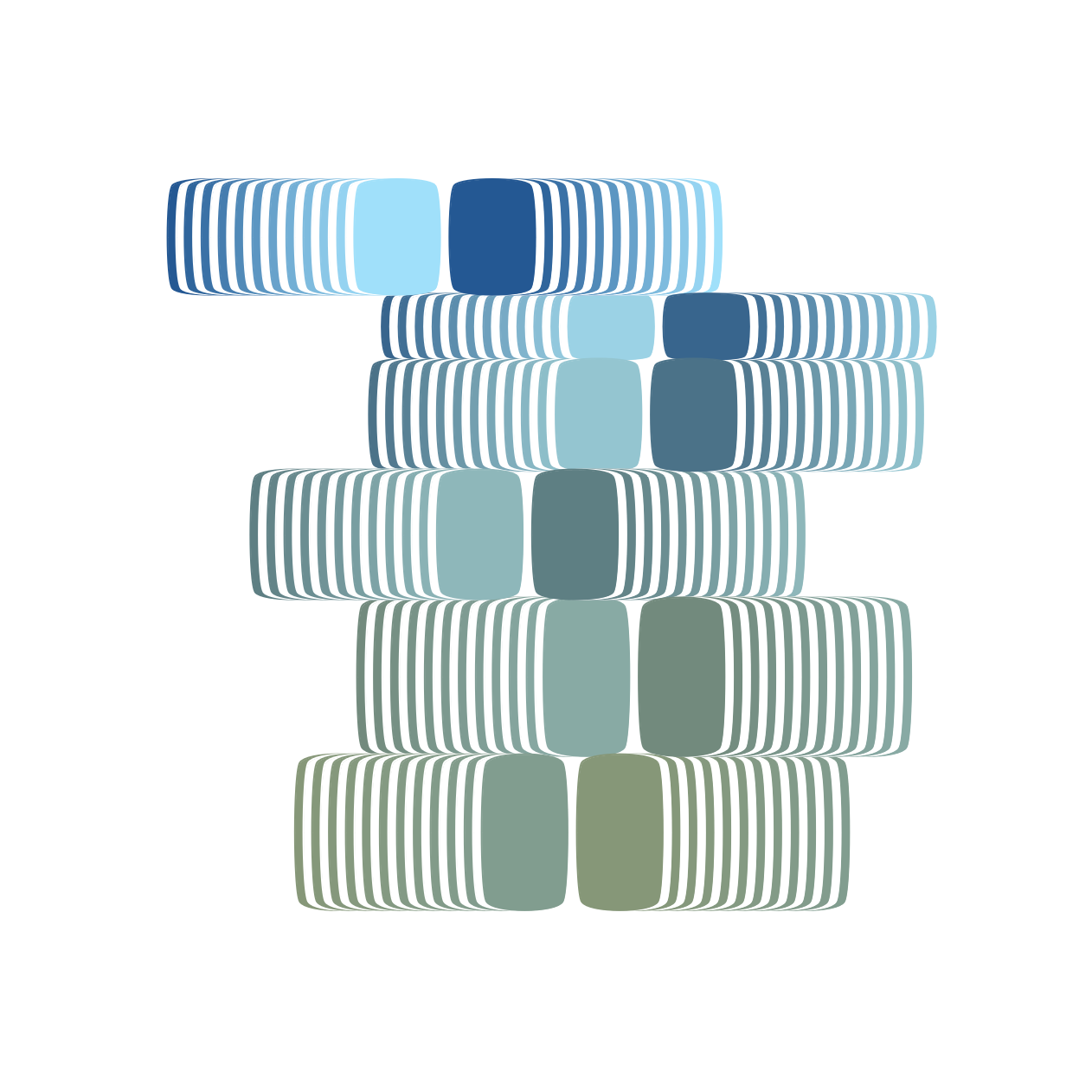
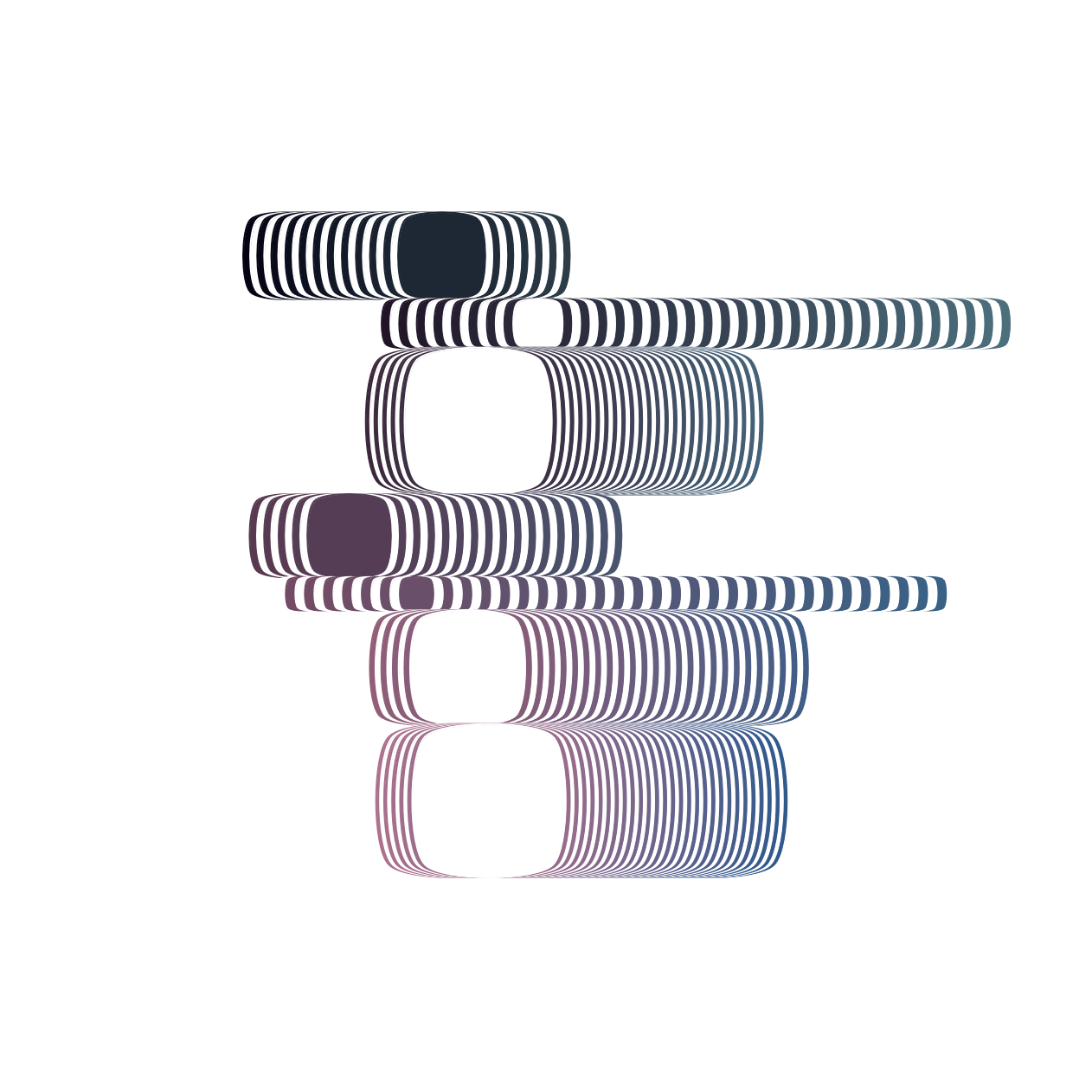
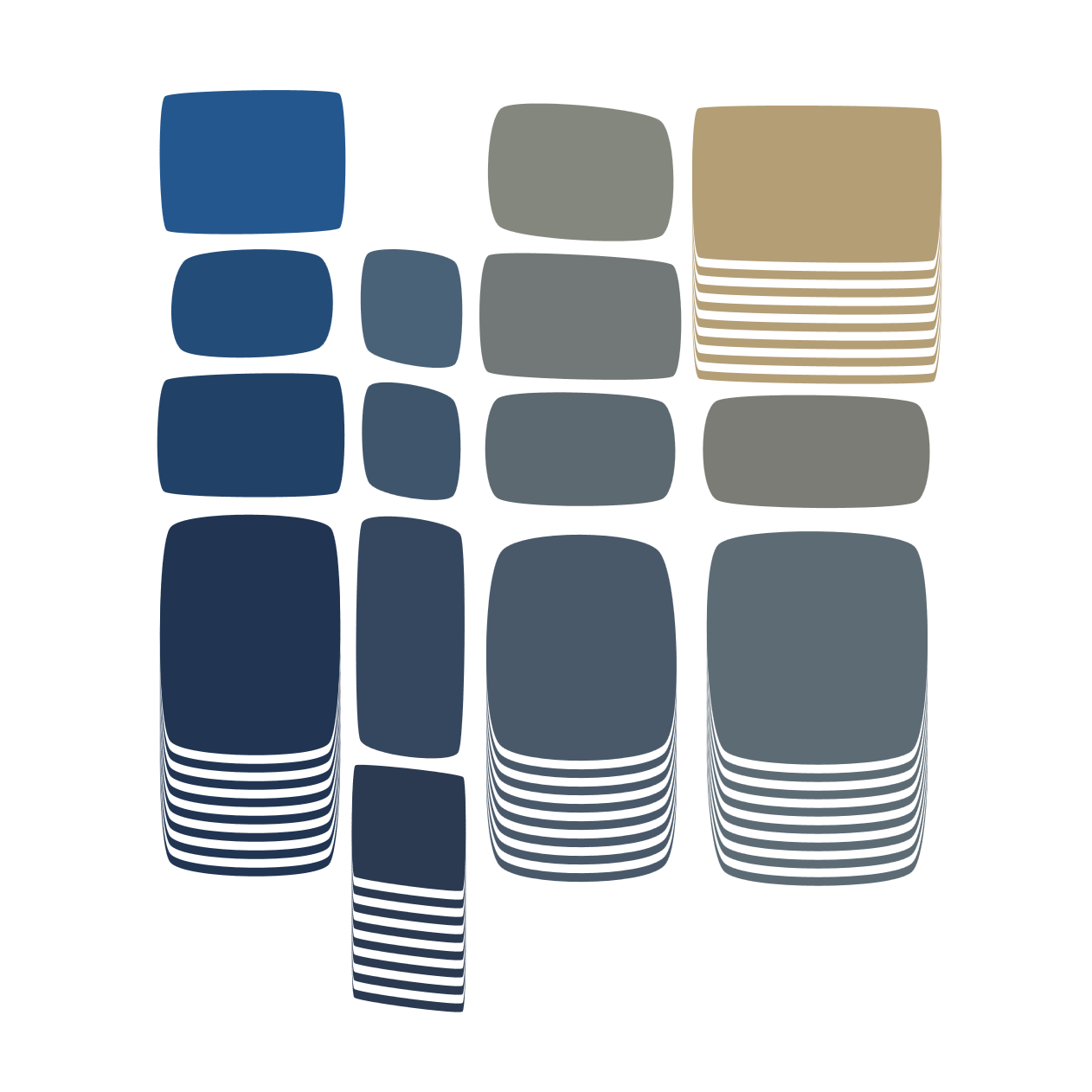
Reflection of Stripes | Diffraction of Waves | Refraction of Stones published on Novemeber 22 on fxhash (interactive pieces)
In the morning I released the first one, then in the next hour I minted the second and the third one, because I already had them all prepared, with their names and everything.
GS: That's really cool. I remember having a lot of trouble with my first fxhash projects, since it was an entirely new concept for me at the time.
AJ: I mean, I have a bug in those early projects, they're not always the same because of the resize (that resets the artwork when the window size changes). But it was so early no one really complained about it, and I don't feel like I can't sleep over it [laughs].
GS: It's the same with my first tokens, the furbols and wisps, when you zoom in or out with the browser it's different every time, but I think it's cool, idk - it's a feature, not a bug. They're still deterministic for the respective window sizes.
AJ: In the beginning people weren't really expecting pieces to be animated, or to adapt to different window sizes, the thumbnails were enough. It was so fun at the beginning of fxhash, it was so relaxing. I mean, we had trouble to develop best practices, to see how it works and get a feel for it, but a lot of good things were minted just in those early days.
On Productivity and Frequency of Releases
GS: I remember that as well, it wasn't actually that many people active on the platform early on, and every day you could see who made what - now it's become a lot more competitive.
AJ: I mean it's a market, so naturally it will be competitive. But at the same time, things have slowed down a little. When I look at the calendar of how many things I minted in the first year of fxhash, I have to ask myself "am I normal", how did I manage to develop so many pieces?
This feeling that I'm not working on anything, now persists because of that huge production during that time. A few days ago I was in a meeting with Danielle King, (we collaborated on an generative AI project, and continued with our weekly meetings. First she introduced me to AI, now I’m training her in coding.)
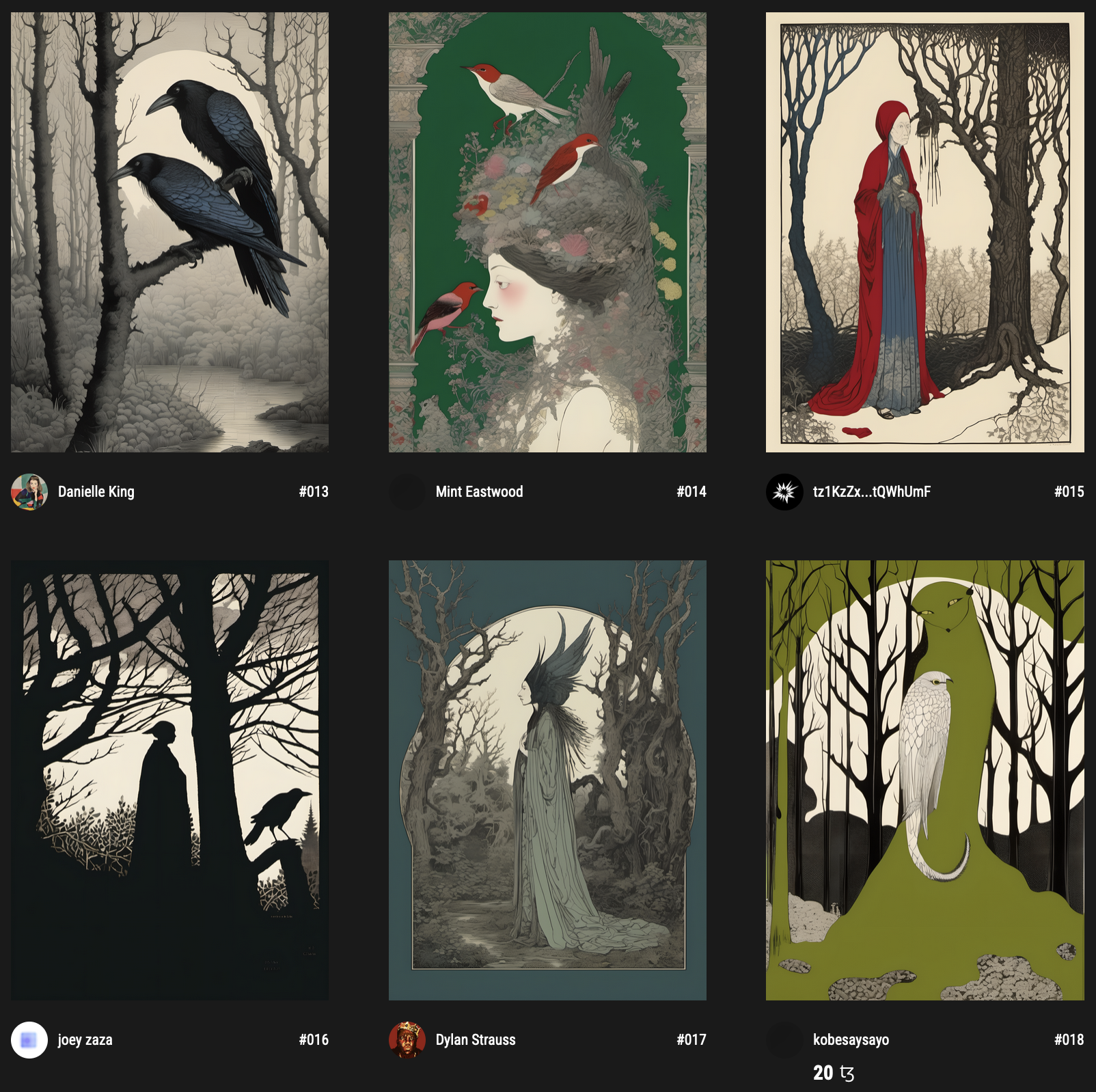
I complained having a feeling that I'm not working on anything huge or important now - but then after the meeting I took a moment and thought to myself "You just had a solo exhibition last December, what's wrong with you, it's only been a couple of months.” I used to have one exhibition per year, and now I feel like I have to have 2 exhibitions a month! It's not normal, so I'm trying to control those destructive thoughts.
GS: I've been thinking about this for a while, on social you see that there's constantly something happening, every week there's a new release - and they're all beautiful - but it gives you a wrong perspective on how much you should be producing. I feel that sometimes you need to slow down a little and just be methodical, like one piece every three months might be a good pace.
AJ: Yeah I think that's a good amount [laughs] for some people that might even be too much, each of us has to find their own pace.
Bridging between Code and the Physical
AJ: The same way that I experiment with algorithms, I experiment with materials. I have a friend that tells me "if you're feeling bad, just do something with your hands, make something, it'll make you feel better". I may be doing it unconsciously, exploring analogue mediums and applying the same generative logic is something I'm interested in.
A recent example are the red and blue linocuts that I experimented with. I had to split the code, not by objects, but by color. I wanted to combine two colors and get the third in overprint, so I had to figure out the code for it - sort of the other way around. Sometimes I'm not satisfied with the final outcomes on paper, but the outcomes from the code gave me inspiration for further experiments.
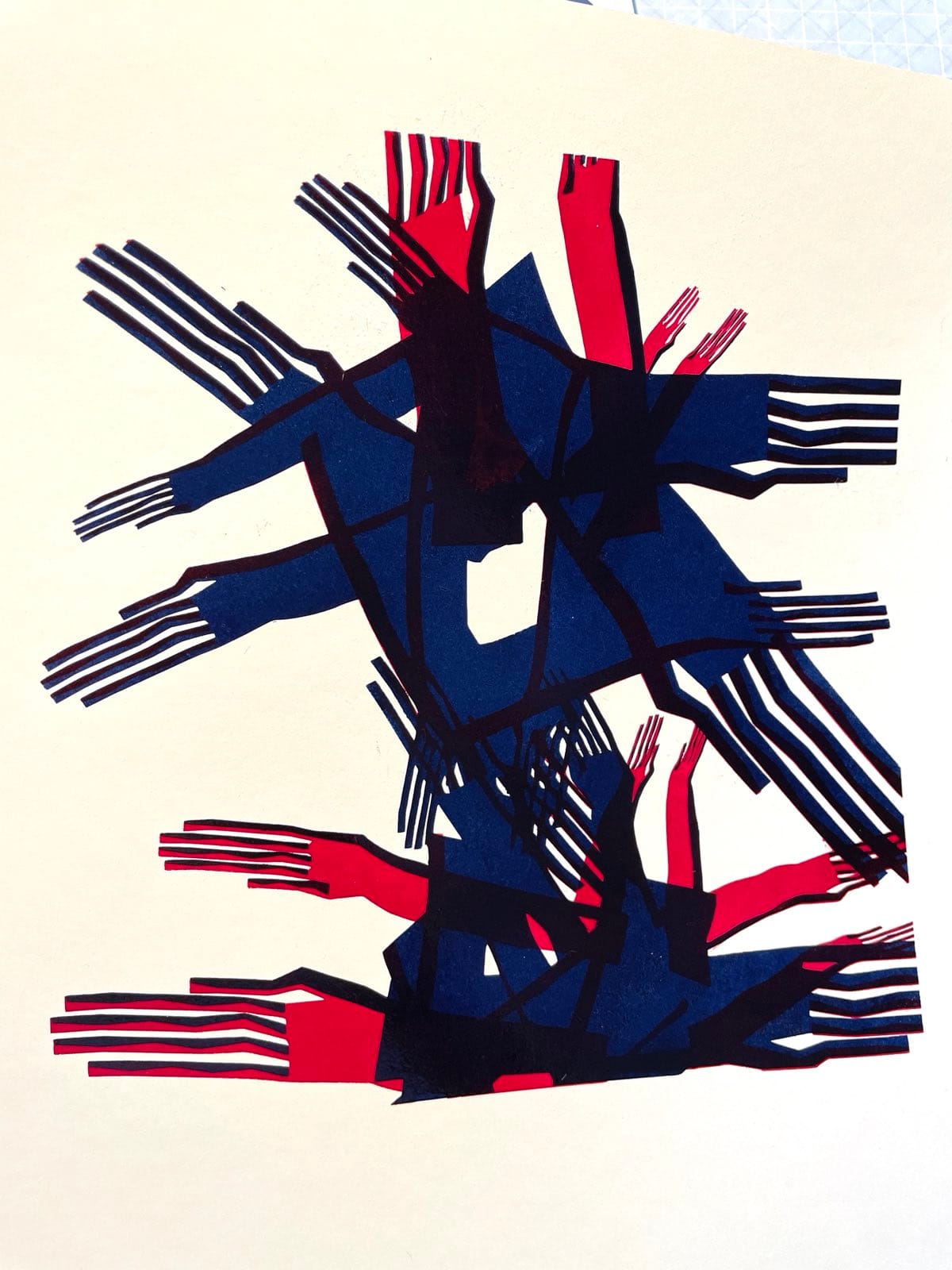
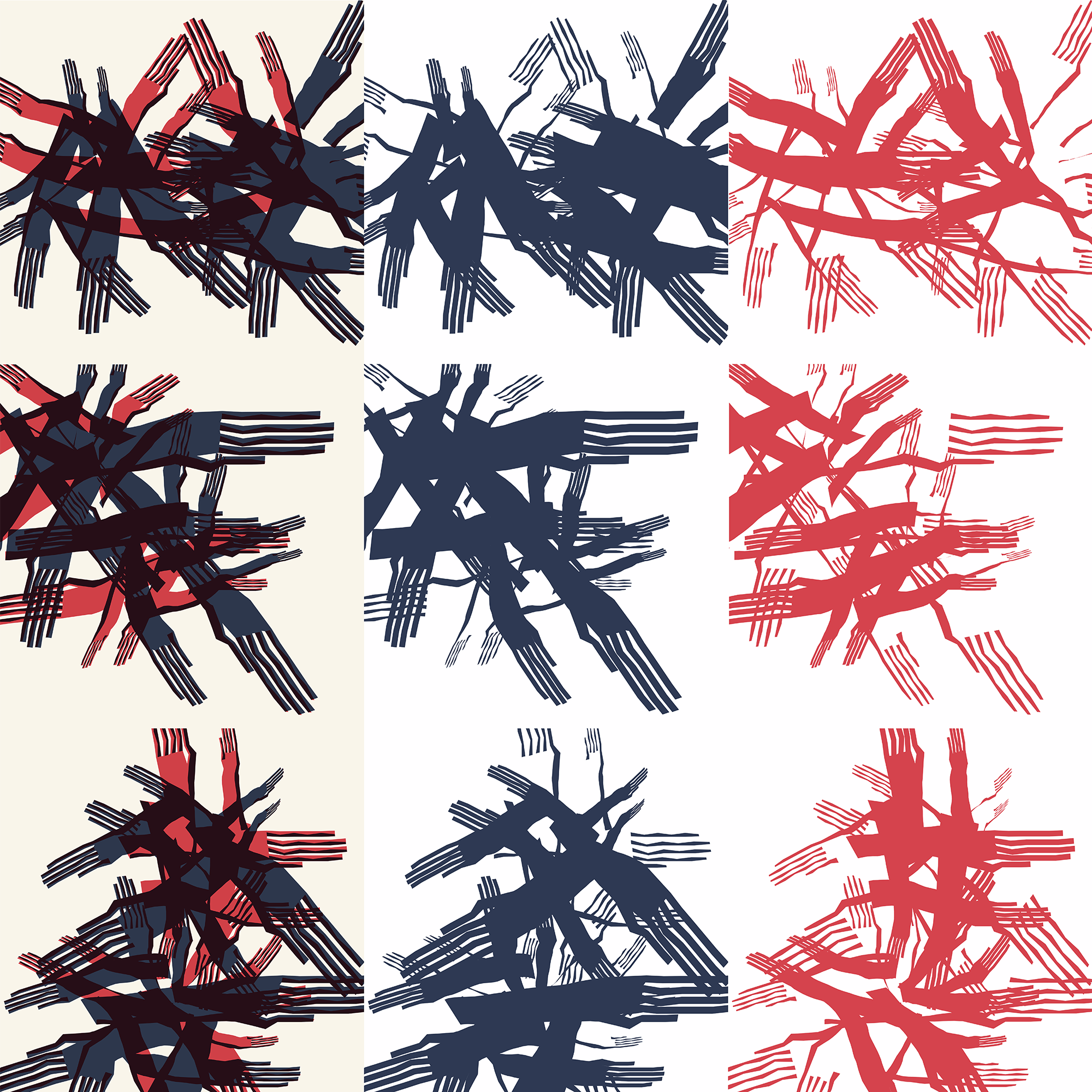
I realised sometimes I have this problem, that I don’t do things in an usual way. When you start a new hobby, first you make something small and then you work your way towards more complicated things. I’m a lunatic that skips the easy levels - for example years ago I decided that I wanted to do origami, and instead of first learning to fold some of the simpler ones, like cranes, I immediately started with a complicated ball with 100 different parts, and when I finished I was like "Ok done, I can do this, what’s next!".
This is became obvious with the two books that I've made so far, they're both huge, 50x70cm, B1 paper folded in half. Now I'm thinking maybe I should do a regular sized book. I’m still exploring ideas for the content, one of them the red and blue dailies that I did in February (2024). I'm thinking about rendering them as a mix of plotter drawings, linocuts etc.
From time to time I search for experiment with different materials for my code generated pieces - if they don't include animation or interaction, then they can work as physical pieces well too. Now, my Phenakistoscopes project is the combination of the two - they are colourful disks, but are animated when put in motion! There's a number of very talented animators that make these zoetropes and phenakistoscopes these days, and for me it's interesting to see how I can push the code to generate those kinds of images / animations, to get satisfying results considering that there are a lot of constraints involved.
GS: Interesting, the phena - phenak - phe - I cannot pronounce the word [laughs]
AJ: Nobody can [laughs] phenakistoscope (enunciated)
GS: Phenakistoscope (slowly) - I can't remember the arrangement of the letters - is that also a side project?
AJ: No, that one should be a big project. There's actually so many aspects to the production of the piece. Aside from code, to which I return constantly, there are these material aspects of the physical pieces. I'm currently testing prints on different materials, viewing them under different lighting conditions, and how they work on a record player - the most recent one is with plexiglass.
A friend of a friend has a workshop, and was able to print directly on plexiglass without issue - the print is perfect in terms of colors, but it's grainy, so when the light hits it at certain angles you can see the relief of the colors compared to the matte paper, that I prefer. The issue with it is that you need a bright light to make a recording where the disk doesn't appear as blur. So there's so many technical issues with these... then my curator was like "can we have like 10 of them rotating on the wall?". So now I'm buying record player parts and motors from Ali Express.
GS: How do you sync the framerate of the camera with the rotation of the disks?
AJ: You have three parameters for the sync - disk rotation (usually RPM - rounds per minute), camera frame rate (fps) and number of slices on the disk - loop animation frames. The record player is a convenient solution because speeds are already defined, as is the case for the camera frame rate. When you know those two pieces of information, you can calculate how many frames you can put on the circle to obtain a looping animation. It's not that difficult, simple math.
Ultimately it could be an animation on the screen but then you lose the physicality of it. I want it to be a piece that works in a gallery, physical space, your home, where you can play the record and see it through your own phone and record it. The key thing is that we curse time spent on our phones, but in this case you’ll need your phone to fully experience the work.
Inspirations & Advice
GS: Since you talked about Raph and Danielle, who are some of the artists that inspire you today? They don't necessarily have to be doing generative art, can be any kind of art.
AJ: Currently I'm working and developing my “phenakistoscopes” project, so I’m obsessed with vintage illustrations, as well as the history of animation and cartoons. I tend to get an adrenaline spike when I see works by Ori Toor or Jean Giraud (Moebius), but also works by my friends from the Graphics department Nikola Velicki and Vladimir Veljasevic:
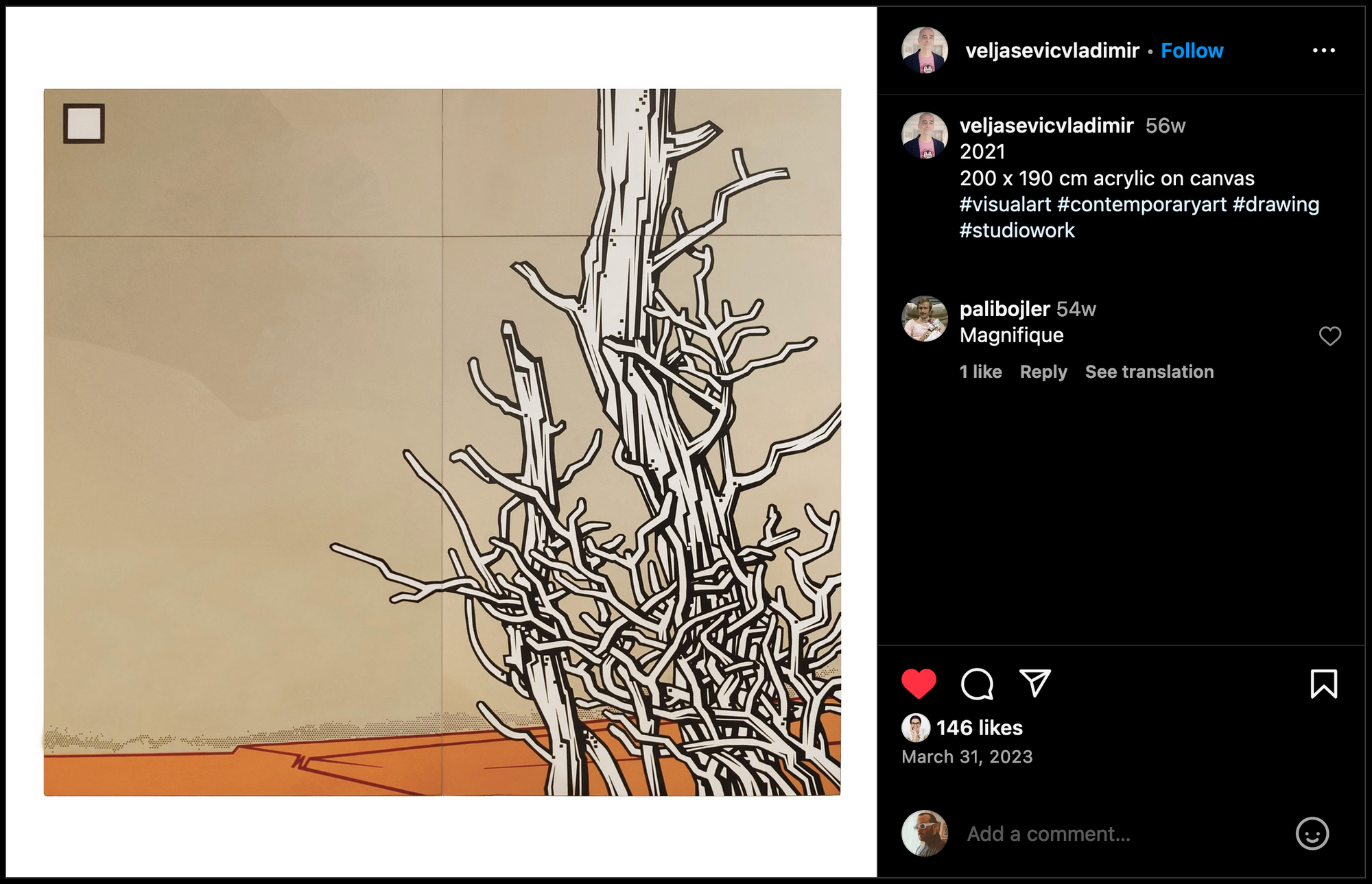
From our field, I feel privileged not only to know, but to be in touch with all artists from the FF (Feral File) GRAPH group exhibition, that Casey Reas assembled and curated. Besides, obviously, Casey, each of them inspire me mostly through their different processes and techniques Julien, Licia, Iskra, James, and Joannie.
And also Tom White (dribnet), mostly for his clever approach to machine perception and AI and consistent explorations.
GS: What is something you wish you'd known much earlier as an artist and as a creator? What is piece of advice that you would like to give people that are just starting out?
AJ: I can only talk about my own struggles, but I have this problem where I don't know how to relax after finishing a project. Taking the time to celebrate the accomplishment basically; when I finish something I often immediately start something new instead, instead of taking breaks and doing some celebratory things - maybe this isn't a good answer, nor advice, it's more of a trait of my personality [chuckles]
Slowing down is something we've been talking about for the past 2 years, but I don't feel like I've slowed down one bit - maybe I'm not minting every two days - but, I still have so many ideas and projects happening all the time. We were hoping that the hype and so many things happening at the same time was just a characteristic of the bull market, and that things would slow down a bit with the bear market. But I don't feel that things are changing.
The good thing I can see about this, is that the way we are creating [...] isn't so much connected to the market or economic things. We are creating no matter what.
Closing Thoughts
To wrap things up, I'd like to give a big thanks to Aleksandra, not just for taking the time to talk to me, but also for sharing her story and letting me in on her practice, while also bearing with me as I transcribed and edited this interview. If you haven't done so yet, and want stay up-to-date with what Aleksandra is up to, go and follow her on Twitter and Instagram where she most frequently posts works in progress, as well as her portfolio here.
If you enjoyed reading this conversation consider sharing it on your socials with friends and followers. Also make sure to have a look at some of the other interviews I've done with other generative artists: Daniel Aguilar, Alessandro Fiore, Pxlshrd, Monk Antony, Tezumie.
That said, thank you for reading! Consider signing up to the Newsletter if you'd like to receive updates like this one directly in your inbox every wekk. Cheers, and happy sketching!
